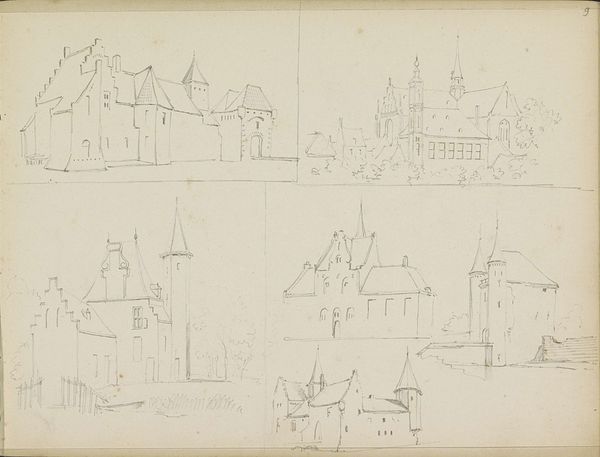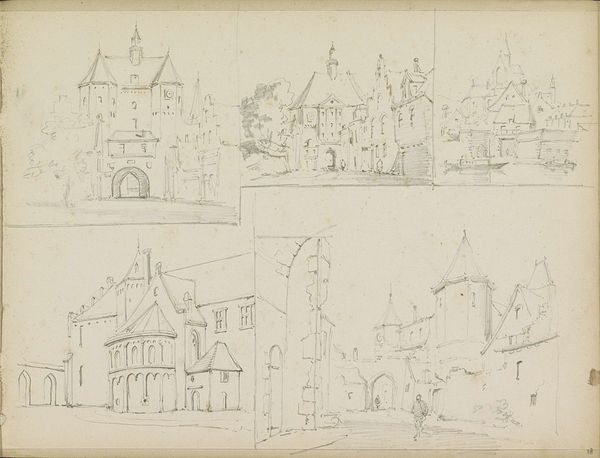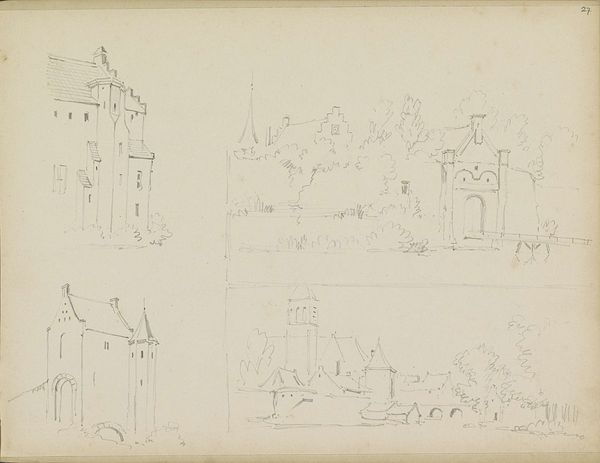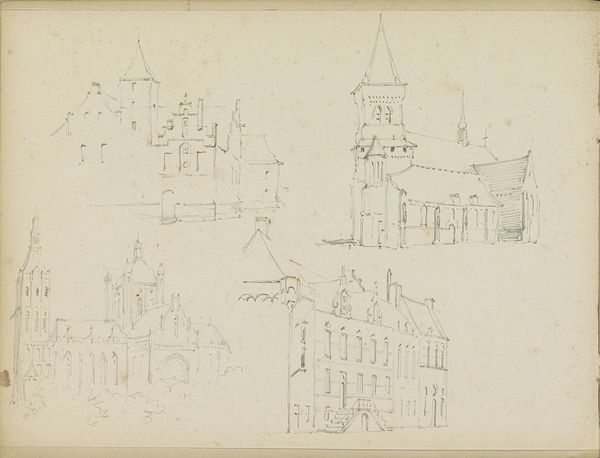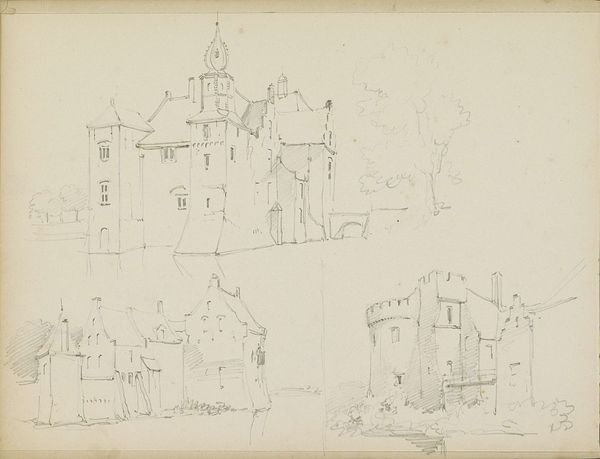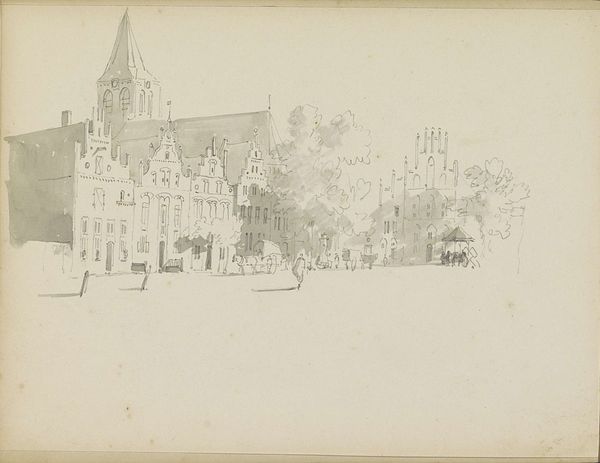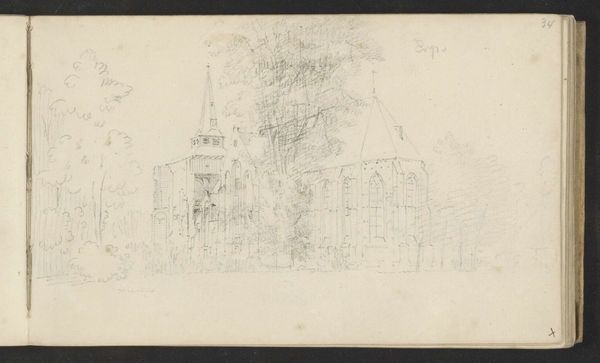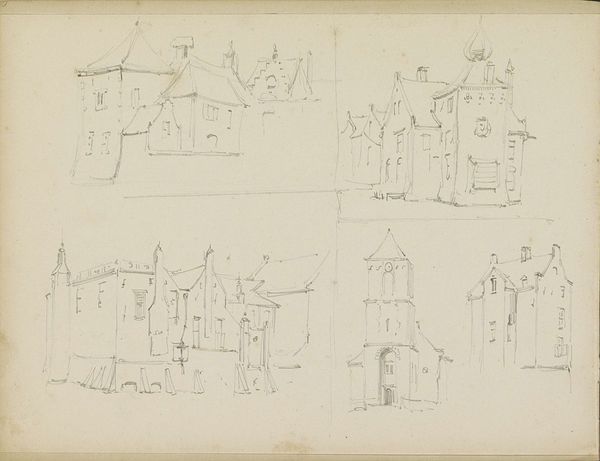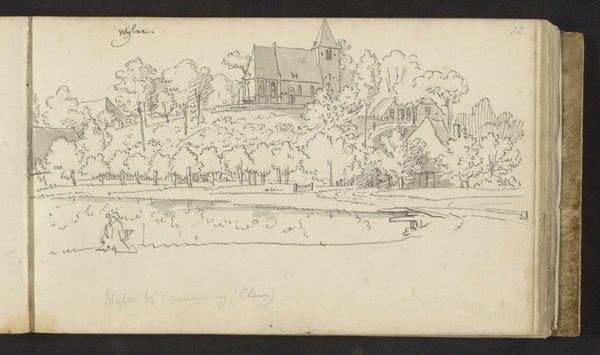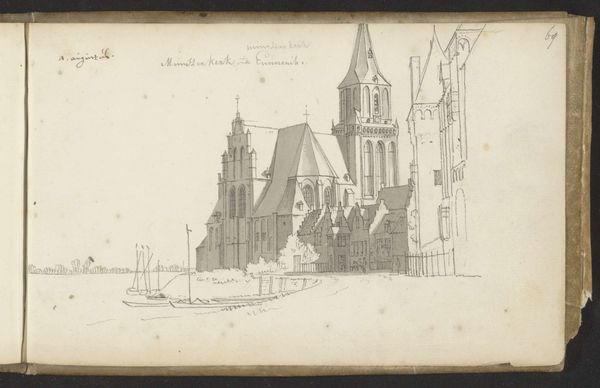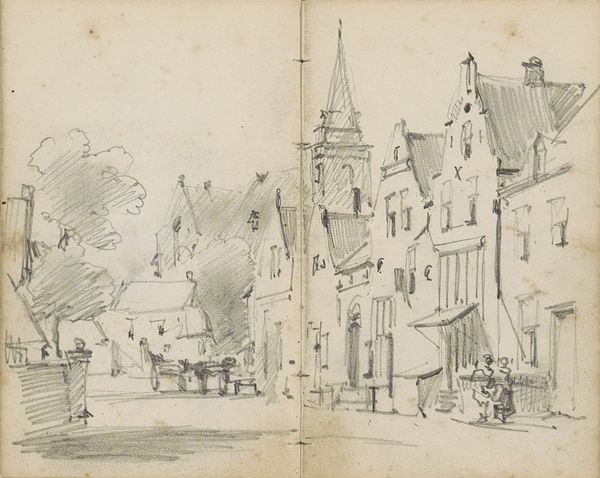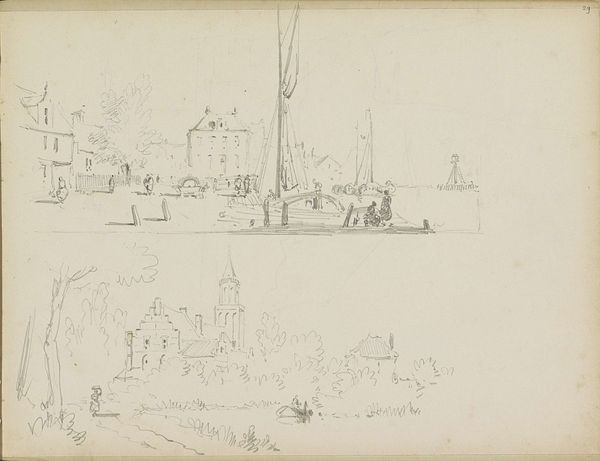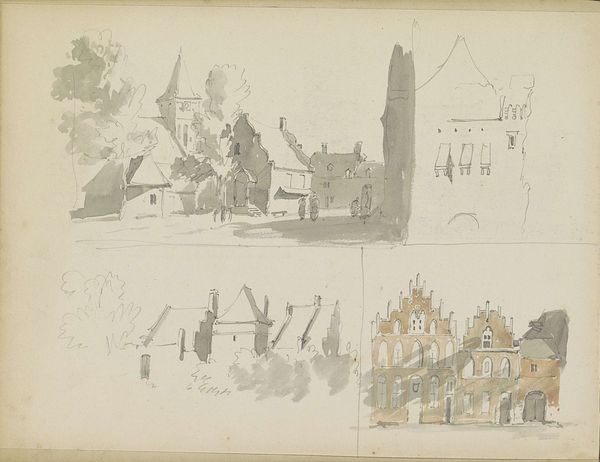
drawing, paper, pencil, architecture
#
architectural sketch
#
drawing
#
aged paper
#
toned paper
#
sketch book
#
landscape
#
paper
#
form
#
personal sketchbook
#
sketchwork
#
ink drawing experimentation
#
pen-ink sketch
#
pencil
#
line
#
sketchbook drawing
#
sketchbook art
#
architecture
#
realism
Copyright: Rijks Museum: Open Domain
Curator: Let’s turn our attention to "Studieblad met gebouwen, waaronder kerken," a sketchbook page of building studies, including churches, by Adrianus Eversen. The piece likely dates sometime between 1828 and 1897, and it is rendered in pencil and ink on paper. Editor: It has a very light, almost ephemeral quality, doesn't it? The composition is split into four distinct vignettes; it gives the impression of flipping through someone's travel journal. Curator: Exactly. Eversen was, of course, deeply involved in depicting urban spaces, particularly those of Dutch cities, and here we see him at work deconstructing and documenting architectural forms. These studies were preparatory for more detailed and formal works. What strikes me is that it is an artist's exploration, but not an ordinary exercise, right? There's a social layer because architecture dictates human behavior as the backdrops and infrastructures for everyday existence. Editor: Definitely. And I think the very medium contributes to that reading. Sketches carry a certain honesty. It feels unvarnished in ways that larger works or paintings might not, maybe precisely because sketches imply the seed of an idea rather than a fully realised product. What narratives can we unpack? I also love how each vignette displays varying perspectives – looking at what different ideologies and classes would observe and feel standing from these varied spots. It gives a panoramic, sociological perspective on spatial relationships between urban subjects and their buildings. Curator: Yes! It also serves as an exploration of power dynamics within those urban environments, right? Eversen's choices – what to emphasize, what to leave out – certainly tell us something about the architectural and urban context he chose to document. It's also tempting to view this through the lens of the burgeoning debates around urbanization and its impact. Editor: I hadn't thought of that, but you're right. In our contemporary society grappling with these concerns and urban social injustices, it encourages a dialogue across time. To look at Eversen’s sketchbook of these observations encourages the contemporary museum visitor to look beyond a nostalgic vision of old Amsterdam, and towards a modern consideration about our place in today’s rapidly constructed world. Curator: I think that's a great perspective. It reminds us that even seemingly straightforward architectural sketches can be powerful tools for understanding both history and our present condition.
Comments
No comments
Be the first to comment and join the conversation on the ultimate creative platform.
